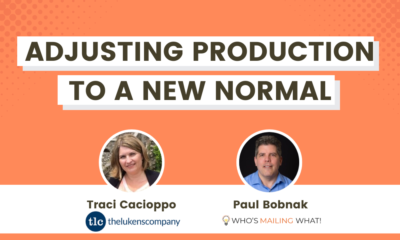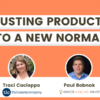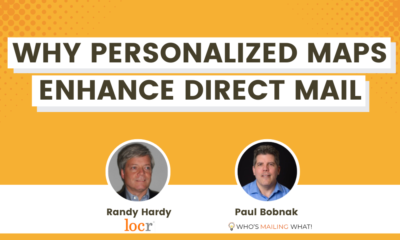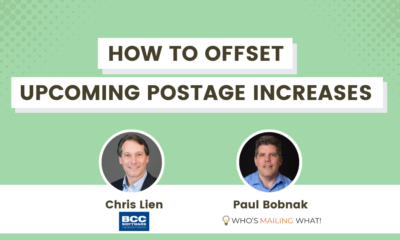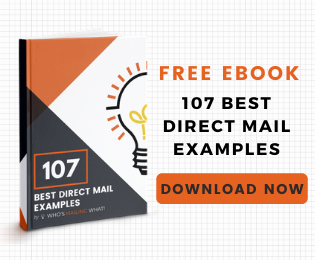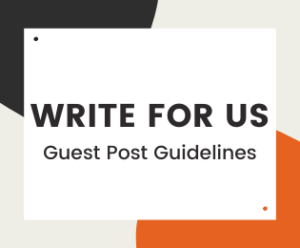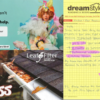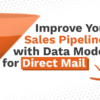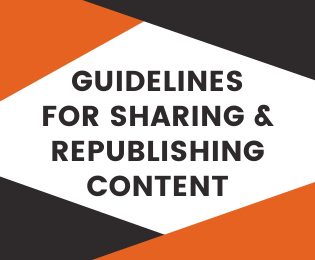MEET THE MAILERS
Meet the Mailers: Mail with a Personal Touch
In this episode, we talked with Postalgia about why handwriting works in mail, best practices for non-profit mail & stewardship, etc.
In this episode, I talked with Ilan Mann, Co-Founder & CEO of Postalgia. Postalgia provides automated handwritten direct mail for companies and non-profits.
We talked about why Postalgia’s handwriting tech creates an impact on recipients.
As he explained,
Everybody, at the end of the day, wants to feel special and heard and seen. And I think that’s what this technology is really doing
 Ilan MannFounder and CEO
Ilan MannFounder and CEO
Postalgia
Among the many other topics we covered:
- His background & day-to-day role
- Postalgia’s automated solution
- Why handwriting works in mail
- Best practices for non-profit mail & stewardship
- How the company’s tech is used by real estate & non-profits
- Industry trends
Here are some questions and answers (edited for clarity and space):
- Can you talk about the solution that your company offers to marketers and non-profit fundraisers?
Yeah, absolutely. So, we use robots that hold a pen and drag it across the paper just like the human hand would to create the most realistic-looking handwritten pieces of mail in the market. And so essentially what that’s doing is …it’s hand addressing envelopes, it’s handwriting little notes and handwriting thank you cards and holiday cards and fundraising letters and things of that nature to make communications as personal as possible using obviously extremely variable data where we can and trying to really scale that human touch.
So the kind of thing that would have normally been reserved for one person, maybe an incredibly important customer or a major gift donor, or an important endorser of a political campaign … we’re trying to scale that and democratize it so that you can treat all of your donors or customers or voters as if they’re the most important person in the room.
We do note cards, tent cards, executive letters, your standard 8.5 X 11, outer envelopes, reply devices, reply envelopes, you name it, newsletters, and sticky notes, we hand write on just about everything we can.
- Direct mail and marketing can take many different forms – but what is it about handwriting that works so well? What kinds of factors are involved?
When I was in school, one of my favorite subjects was learning about cognitive biases and the sort of heuristics that we’re all susceptible to. Daniel Kahneman and Amos Tversky, they’ve got that famous book, Thinking Fast and Slow, where they talk about sort of the mistakes that we all make, that every human is susceptible to.
And one of the things they talk about that I loved is the effort heuristic, which is that we assign more value to something that we think took more effort to create, and I think that’s exactly what’s happening here with handwritten notes.
The idea that somebody sat down and took the time to write something for you, they got the hand cramps and everything, they got the ink stains, that just sort of gives the recipient pause before they sort of throw it out and move on to the next piece of mail.
In fact, the opposite happens. Typically when you’ve got a pile of mail, you know, got your pizza flyers, and you’ve got your hydro bills and things along those lines. You see a handwritten letter popping out, maybe in an off-size, off-color envelope, that sort of thing. And that’s the first thing you want to open.
And so, I think that has a lot to do with the effort heuristic and the idea that somebody took the time and sat down and personalized this. Everybody, at the end of the day, wants to feel special and heard and seen. And I think that’s what this technology is really doing.
- It seems like this tech incorporated in mail can work for several verticals. Which categories do you primarily work with?
We have kind of a diverse set of verticals that we address. But I would say probably the biggest and fastest-growing would be non-profit.
And that’s also, I think, one of the verticals we have the most value in. So fundraising and, of course, stewardship, which is a growing phenomenon in the non-profit world and non-profit fundraising. And you kind of, you know, you hit the nail right on the head earlier when you said sending out, you know, donor anniversary cards or birthday cards or these highly personalized holiday cards or thank you cards.
That’s a great way to show donors that you care and that you’re grounded, you know, that you’re grateful. And there’s an organizational culture of gratitude around their gift. And that sort of communicates to them that their gift is being spent wisely in a way that’s sort of the inference that comes with that culture of gratitude.
So stewardship has just been exploding over the last few years, and we’ve been pretty lucky to be a part of that growth. And so we do a ton of that, and then we’ve seen incredible results on the fundraising, which we also do. But those two hand in hand have been really a great one-two punch.
- About one of the markets Postalgia serves … what are some good practices for non-profits, including direct mail?
One of the most impactful things that we’ve seen is we’ve really A/B tested sending of stewardship pieces – and not; sending out stewardship pieces and sending out higher impact, more personalized stewardship pieces – and not. And we’ve seen a massive increase in the follow-on fundraising that comes when people receive something as simple as …I’ll give you an example we did for a large foundation out of Massachusetts.
We did a Thanksgiving card to half their list. No ask. No reply device, no pledge card. Just “Happy Thanksgiving” from a relationship manager they may or may not know, including one or two details that we had if we had them. And we sent that to half the list, and we didn’t send it to the other half of the list. And then, a month later, the whole list received their end-of-year fundraising appeal. And they raised more than $130,000 more from the half of the list that received the Thanksgiving card.
They were more likely to give, they gave in much higher quantities. This was just sort of a random A/B test. So, we use that example all the time to illustrate the importance of stewardship.
And then also, in fundraising, it’s important to just ask the person as an individual rather than ask them as a name on your list or a number in a database.
So that means including a personalized P.S., maybe referencing their past generosity, having it signed by somebody at the organization who’s had an interaction with them. That’s another thing that we use, I think, to a great effect is variable handwritings and variable signatures. So even if we’re sending 10,000 recipients, one person can be pulled out based on a variable in the database and given a message or written a message in a different handwriting with a different signature that corresponds to somebody with whom they have a personal relationship with the organization.
And that’s incredibly powerful because, at the end of the day, I think … you know this, I know this: people buy from people, people give to people, and that’s sort of what we’re trying to do here.
- So are there other verticals that really work well? I’m thinking possibly real estate would be a good one?
For sure. And the unique thing about real estate is that we work with massive brokerages and … independent realtors who are just trying to build their brand and get their name out in the community. This technology is a great way to do that.
I mean, if you want to talk about people buying from people, there are very few businesses that people do that more than in real estate, right? Your home is probably the single biggest purchase you’re ever going to make. You really need a culture of trust with the person that you’re going to empower to make that purchase on your behalf.
And so, a handwritten letter is a great way to build that relationship and build that trust. And, of course, just stand out and get the attention, it’s such a competitive market. So we’ve been pretty lucky to see a ton of business come in through real estate, buyers, sellers, investors, really the whole gamut.
- How can companies use handwriting to engage customers at different points along the customer journey? Would you, for example, use different formats?
Yeah, absolutely. So, one of the things we do is we have a lot more inserts that we put into the envelope the higher up in the funnel it is.
So one of the key things about a handwritten message is that you wanna keep it short. It sort of crosses that uncanny valley when it’s too long, and people start to think it doesn’t look so real, and so it packs a huge punch, but you want to keep it short. And in order to have that impact, you can’t necessarily always cram as much information as you might want to, with someone who’s higher up in the funnel and less familiar with your offering.
So that’s where we start adding in newsletters or impact reports or, you know, informational flyers, things of that nature, and then a little handwritten note on them or onto a note that’s paperclipped onto them or inserted in the envelope with a newsletter, that kind of thing.
And then, as you get farther down the funnel, you’re talking about either warmer prospects that you’re more familiar with or people who aren’t your customers. That’s when you start to be able to really leverage variable data because you have more information on them. And you’re able to sort of build on past interactions with them, assuming you keep your CRM clean, which is sort of the first order of any direct mail campaign, I think that’s as good as your data.
- What is the best value proposition for direct mail … why does it still work so well today?
I used to have this cartoon that I would point to, and I’m just going to butcher it in the description, but I’ll do my best, you know, trying to verbally describe a visual medium, but it basically showed somebody 20 years ago, with a big pile of mail being super excited about their computers digging and saying, you’ve got mail. It says, you know, 20 years later, and that same person has 950 unread emails in their inbox, and they’re super excited about that letter that they got.
And so I think just the proliferation of digital media has made direct mail a very distinct choice. It costs money.
We’re sending an email. It doesn’t necessarily cost much money.
And so people are sending fewer and fewer pieces every year. And those pieces need to be higher and higher impact. And I think that’s kind of what makes direct mail magical now, is that, first of all, anything that could transcend into the offline, tactile, analog world.
It’s automatically magical in my book, because everything’s so digital today. It feels often disconnected from reality, and breaking past that noise with something physical is just a treat. But then also because fewer and fewer pieces are getting sent, the pieces that are getting sent are a novelty.
And they’re breaking through that noise in a very real way. And then handwriting is just a further way to stand out and to make those personal connections. So if that answers your question, yeah, I think that’s one of the reasons, if not the big reason why direct mail is so powerful today.
Here is our conversation (with all questions and answers). We’ve added timecodes for your convenience.
Thank you, Ilan, for sharing your perspective and your expertise! To learn more about Postalgia, visit their website at www.Postalgia.ink.
Your comments and ideas are very important to us in making your Who’s Mailing What! experience even better for you. Through these engaging talks, we hope you’ll take away practical tips, insights, and personal stories to inspire and build your own success.
If you have any feedback — or are interested in sharing your expertise and viewpoint with our wide and diverse audience on “Meet the Mailers” — please reach out to me. I’d love to hear from you!









